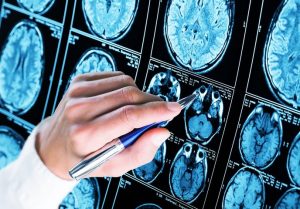Researchers at the Medical College of Georgia at Augusta University want to better understand why many men with prostate cancer develop AD, and whether standard hormone treatment or an overactive immune response is actually contributing to the problem. Hormone therapy, androgen deprivation therapy (ADT), treats the cancer by reducing the testosterone that the cancer needs to grow. However, androgen is a key regulator of amyloid metabolism, and when it is removed from the equation, more amyloid is left to form the plaques that are the hallmark of Alzheimer’s disease.
How Hormone Therapy, Cancer and Alzheimer’s Disease are Linked
According to Qin Wang, MD/PhD, Georgia Research Alliance Eminent Scholar in Neurodegeneration and founding director of the Program for Alzheimer’s Therapeutic Discovery at MCG, prostate cancer is a disease that primarily affects men over the age of 65, a population that is already at higher risk for Alzheimer’s disease simply because of their age. The role that ADT may play in relation to cancer and Alzheimer’s disease is still largely poorly understood.
Wang and her research team hypothesized that the body’s overactive immune response and the resulting inflammation may play a role. To better understand this, they created an animal model with Alzheimer’s and cancer and then administered ADT for eight weeks while monitoring androgen levels and tumor size. The researchers first wanted to validate their model and also check if there were any cognitive deficits in this group.
They also developed other animal models. A so-called wild type (without Alzheimer’s or cancer), a group with only Alzheimer’s and a group with only cancer that received ADT therapy helped the team to describe this complex interaction in more detail. The researchers also regularly monitored changes in the blood to determine immune markers. At the end of the eight weeks, they also looked for elevated amyloid in the brain, but to their surprise, they could not find a significant difference in plaque burden in either group. However, they did find high reactivity in the glial cells of the groups with cancer and the ADT-treated groups. Glial cells are part of the central nervous system and normally support nerve cells to function properly. Their hyperactivity is a key indicator of inflammation in the brain, Wang said.
ADT Therapy Against Prostate Cancer
The researchers also found an increase in pro-inflammatory cytokines, small proteins that trigger inflammation throughout the body, and a decrease in anti-inflammatory cytokines, particularly in the animals with Alzheimer’s and cancer that received ADT. The team also examined the animals’ blood-brain barrier and found that the same group showed significant damage. Under normal circumstances, this barrier protects the brain from harmful substances while allowing important molecules to pass through. “This would explain why there is so much more inflammation in this group,” Wang and the team report in the journal Science Advances. The ADT treatment actually makes the blood-brain barrier more permeable. Then these immune cells, which circulate in greater quantities due to the cancer and subsequent treatment, can enter the brain – we call this immune cell infiltration – and cause inflammation associated with cognitive decline.
To intervene and stop the immune cell infiltration, Wang and her team turned to a drug that is already on the market for the treatment of multiple sclerosis and Chron’s disease. Natalizumab is a disease-modifying therapy that attaches to immune cells and prevents them from crossing the blood-brain barrier and entering the central nervous system. Treating mice suffering from cancer, Alzheimer’s disease and cancer with a combination of ADT and natalizumab not only reduced infiltration, but also improved the integrity of the blood-brain barrier. Then the researchers looked at inflammatory markers, and these levels were also lowered. The team essentially reduced the pro-inflammatory cycle and improved cognitive function. According to the experts, the immune system response is the key factor here. As the drug is already on the market, the next steps could include a clinical trial on patients undergoing ADT therapy for prostate cancer.






